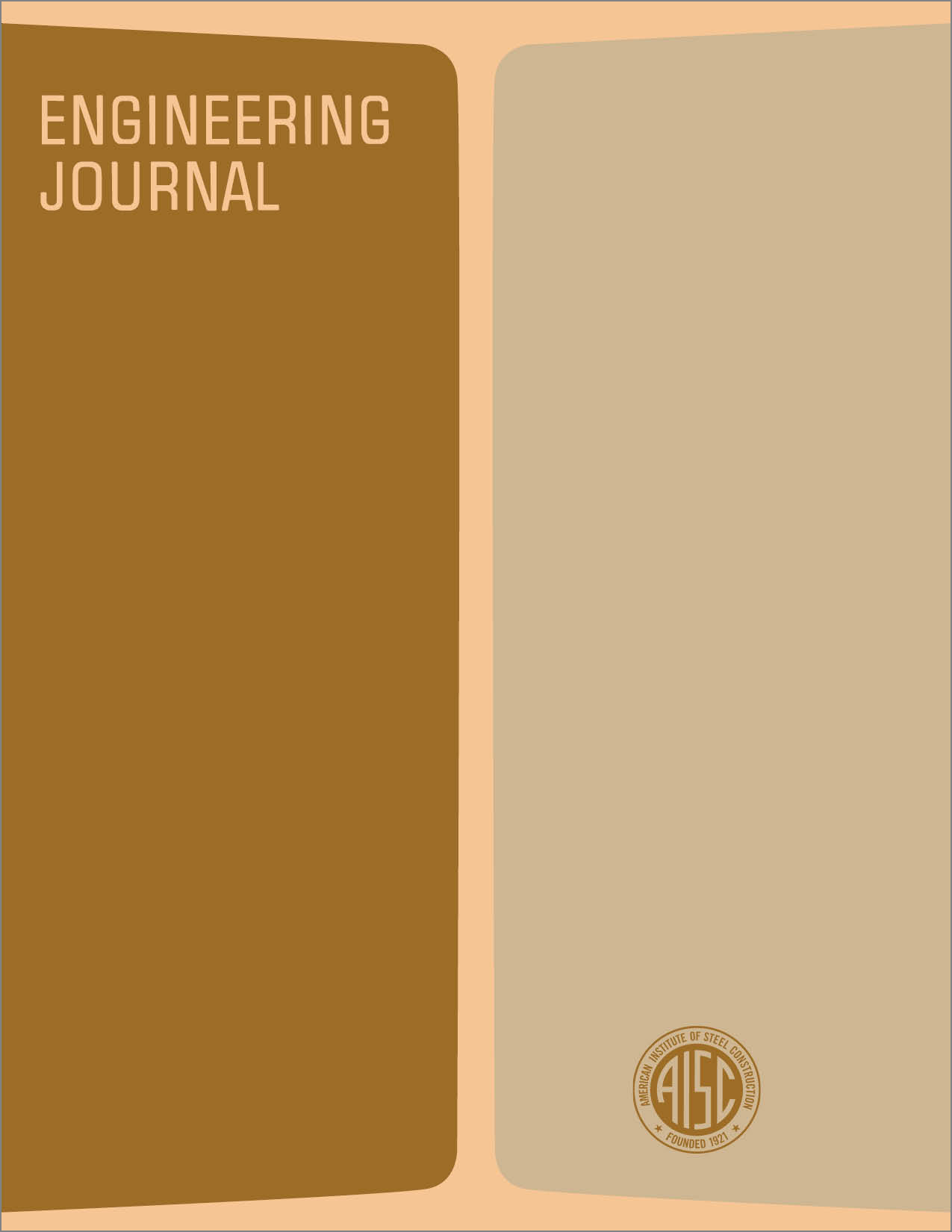The Importance of Tension Chord Bracing
DOI:
https://doi.org/10.62913/engj.v20i3.397Abstract
A calculation procedure has been presented which allows the designer to determine the need for tension chord bracing for joists, joist girders and fabricated trusses. Based on these procedures, it is apparent that serious consideration should be given to providing bracing to the tension chord of trusses and providing bridging lines at the first bottom chord panel point for steel joists. The equations upon which the calculation procedure is based are predicated upon the assumption that a P-D force develops for the compression member. These equations may be overly conservative for certain conditions. For example, since the majority of load is delivered to the end compression diagonals shown in Fig. 2 through the adjacent tension diagonal, when the tension chord displaces laterally the tension diagonal also displaces and delivers the load to the compression diagonal concentrically (see Fig. 12), thus the only P-D force that is developed may be that due to the panel point load. It would then appear that to stabilize trusses of the type described here, that one could use only the concentrated panel point loads in the bracing equations, as one would in the case of a Vierendeel truss. Until such time as research indicates this approach is justified, a more conservative approach should be taken.

